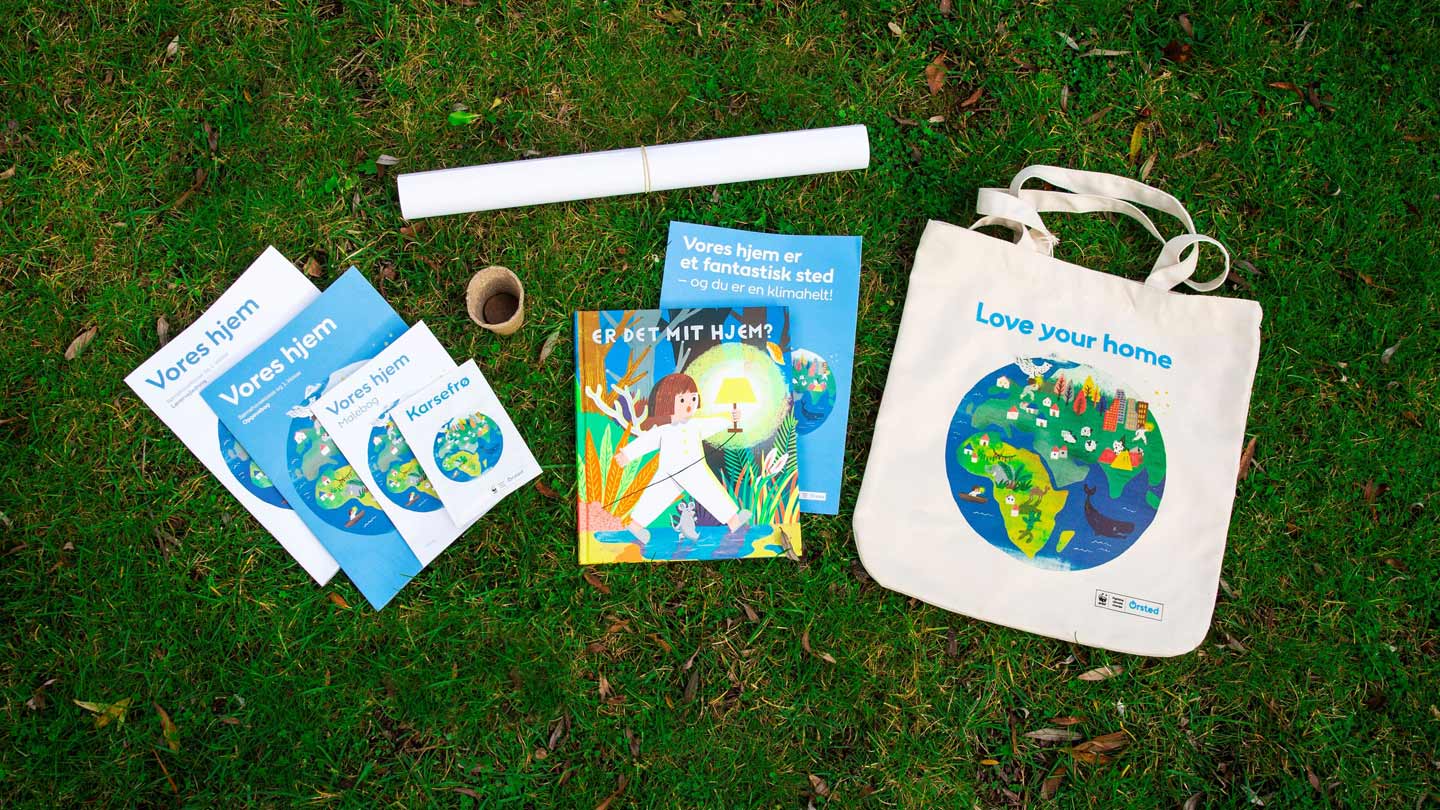And they’re in huge demand. The teaching material, which was developed jointly by WWF Denmark and Ørsted, has been sent out to teachers of more than 60,000 children in Danish primary schools. At the national level, more than 70% of Danish primary schools have ordered the classroom resources.*
“The negative climate stories often get all the attention, and this frightens our children. So we’re extremely pleased that schools all over Denmark are now making room for the climate and climate change solutions in their timetables. Moving through the teaching material, the children will get the understanding that we can actually do something about climate change and that there’s still hope for the climate. At the same time, they learn about climate in a language they understand, making it possible for children and parents to talk about the climate at home without the discussion being driven by fear,” says Filip Engel, Vice President of Sustainability, Public Affairs and Branding in Ørsted.
Children are generally curious and often fascinated by nature from an early age. Nurturing an awareness of the value and importance of nature also creates a wish to protect it, and that’s exactly what the new classroom resources for young children are designed to do, according to WWF Denmark.
“The climate and nature crisis is putting massive stress on our ecosystems and amazing wildlife, and we know from surveys that more than 40% of children and young people in Europe fear climate change. But it shouldn’t be that way, since we already know the solutions to many of the challenges - and our children and young people deserve to know about them. Therefore, it makes me happy that our material is being sent out to more than 60,000 children, so we can join forces to combat fear with useful facts and at the same time enable children and their families to act and do something about the nature crisis,” says Bo Øksnebjerg, Secretary General of WWF Denmark.
Climate material children can relate to
Studies show that parents want to discuss climate change with their children but often find it difficult to broach the topic. But when it’s taught as a subject at school, it becomes natural to continue the dialogue at home.
In addition to teaching guides, the material contains a colouring book with pictures of animals and facts about their living conditions. The children can bring the colouring book back home, which gives them and their parents a good opportunity to continue the conversation about what we can do for the climate.
Across the country, more than 70% of the Danish primary schools have ordered the climate teaching material.*
The great demand does not surprise Jens Raahauge, a board member of the Danish Teachers’ Association’s Primary School Section:
“Children have the right to knowledge. They must be informed about the facts, but they also have a right to see what lines of action are available to them. This new material was carefully designed with this in mind. It includes some wonderful little experiments which are simple and manageable,” he says.
“This will awaken the minds of the youngest children and encourage them to learn with their hands and senses of smell and taste. They simply use their senses to discover causes, effects and possibilities, and this gives them the opportunities to act.”
The classroom material, which is called ‘Vores hjem’, Danish for ‘our home’, includes:
•
a beautiful picture book for reading aloud during class
•
workbooks that conveys knowledge through fun, practical exercises
•
a detailed teaching guide
•
a nice diploma for each child
•
a poster of our fantastic home, planet Earth
•
an educational colouring book that the schoolchildren can bring back home.
The material was ready for classrooms during the climate week (23-27 September), but can be used all year round.
* The figures are based on Statistics Denmark’s calculation of the number of schoolchildren in the various Danish regions. These figures were divided by the national average number of schoolchildren per class, which is 21.7. The percentages were subsequently adjusted downwards to compensate for the uncertainty of the average number of schoolchildren.

